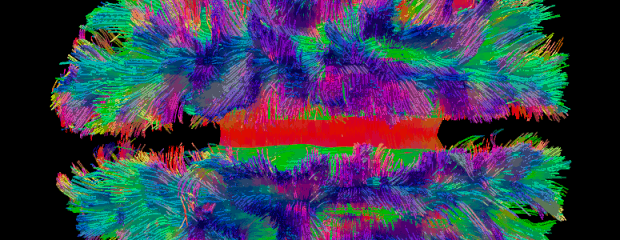We met up with Vesna Prčkovska, Co Founder of Mint Labs. Mint Labs develops visualization and image manipulation software for the virtual dissection of white matter structures of the brain. The company provides imaging marker quantification for longitudinal studies, across population and across time.
Who are you?
My name is Vesna Prčkovska and I’m a cofounder of Mint Labs. We are a recently established startup, less than one year old actually. We work with big data and with visualization of big data, medical data in this case.
What is your background?
I am an electrical engineer by background and have obtained my PhD in the area of image processing and medical visualization. I have a broad experience in medical image processing and medical visualization. My current work focusses on brain connectomics, more specifically modeling the disconnection syndrom in patients with Multiple Sclerosis.
My goal is to develop novel technical tools in brain imaging and provide new insights on how the brain is organized. Furthermore, I hope to contribute in the development of novel biomarkers that can ease the diagnosis of neurological diseases (i.e., Multiple Sclerosis). Ultimately, I hope to contribute to the paradigm shift in understanding how the brain functions.
When you say big data, what does that mean for Mint Labs?
It means multi-model data that comes from MRI scanners (magnetic resonance imaging). This data can be per-patient longitudinal data or a collection from a large number of patients. And of course, with different contrasts, so that per patient you would get different scan data.
 Image : Brain Visualisation of Vesna Prčkovska
Image : Brain Visualisation of Vesna Prčkovska
How did you come up with this idea?
We did our PhD at the Technical University of Eindhoven in this technology and, after finishing the PhD, we wanted to do some kind of translational work. So we started the company and focused on all those things you cannot do when you’re in research.
Could you tell me a bit more about your product?
Absolutely – We’re developing a platform on the Cloud that neurosurgeons and neurologists from all over the world can access and simply drag-and-drop images from the MRI scanner and get processed 3-dimensional maps of the brain. They can also get numbers out of the measurements, quantification which can help in the diagnosis, prognosis, and treatment of patients with brain diseases. Additionally, for the application of neurosurgery, we have developed a pre-surgical planner. We exploit 3-D technologies for gesture capture, like motion, because that way you can interact with the data in a very intuitive way and it’s very easy to sterilise it in an operation room. The learning curve, which normally is one of the biggest obstacles in trying to give powerful visualisation image processing tools to people without technical background for the end-user – doctors and physicians in our case – is very small.
What is your business model?
Our business model is two-fold. On the one side, its paper image analysis, mostly for researchers in the field as well as certain hospitals. That means our service is analyzing the images. But also we have a B2B business model. Our platform is compatible with the big players in the field which focus primarily on hardware equipment. This means we can license our technology.
Are you looking for any special funding or special talents to hire?
Talents? Always! We’re looking for good developers. We are just opening a new investment round of 1 million and we think we’re going to raise half of this money through public funding like grants, from the state’s NIH program, for example. And we already have some funding. We had some funding from where we are located in Barcelona, so Spanish funding.
Where do you see yourself one year from now?
Growing bigger, for sure and growing our clients. At the moment we have ten pilots and we want to have one big deal by the end of this year.
Mint Labs develops visualization and image manipulation software for the virtual dissection of white matter structures of the brain. The company provides imaging marker quantification for longitudinal studies, across population and across time.





